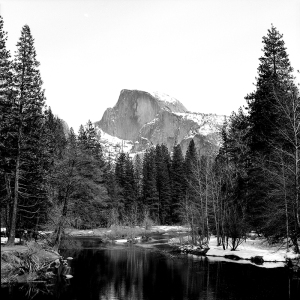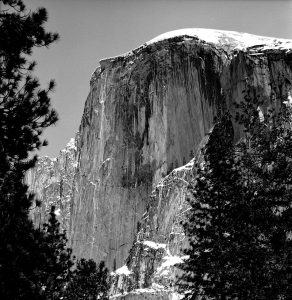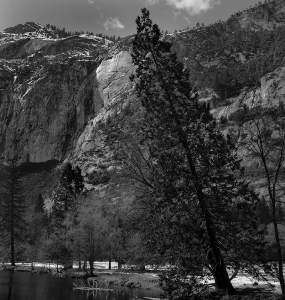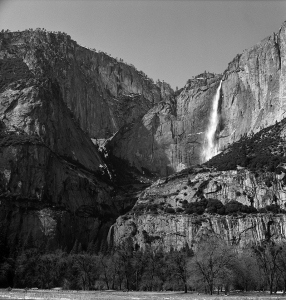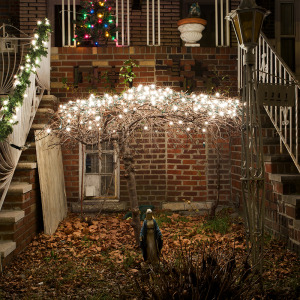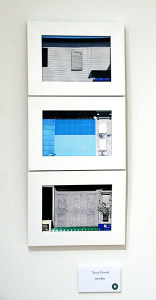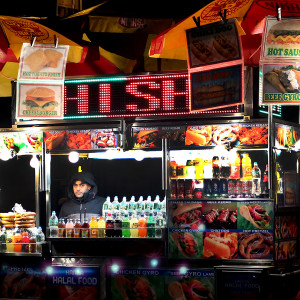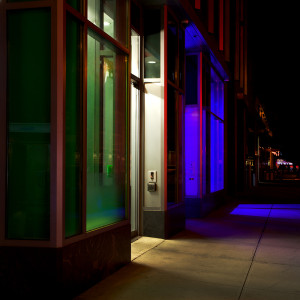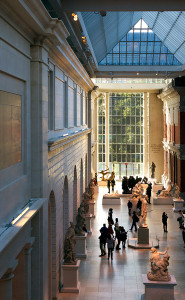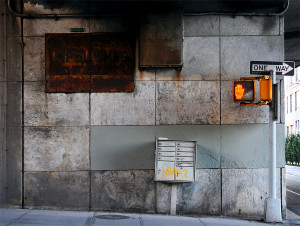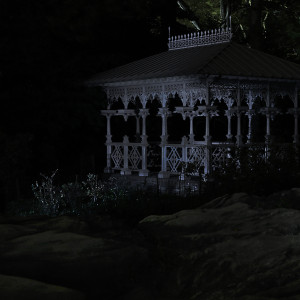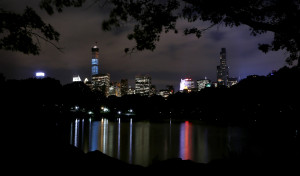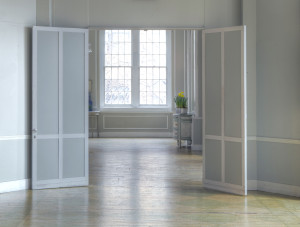Just a couple of days ago, on January 14th, Tommy Caldwell and Kevin Jorgeson succeeded in their quest to “free” climb the 3,000 foot face of El Capitan in Yosemite. Climbing by hanging on with their fingertips rather than using modern but less challenging equipment.
The Metropolitan Museum of Art meanwhile has an exhibition of the photographs by Carleton Watkins that he took of Yosemite falls, Half Dome and El Capitan from 1861 to 1866. Watkins’ camera was really big, manufactured especially for the trip. It held huge18” x 22” glass plates to record the scene and he needed 12 mules to carry his equipment.
What amazes me about Watkins is not that he captured the scenes but that he got there in the first place. How do you decide to go into a wilderness like Yosemite, 150+ years ago, armed with a collection of two feet wide glass slides to expose photographic images on? How do you physically set up in the great outdoors and take these photographs? Watkins processed the plates on site too using the wet collodian process. How on earth did he you get it all back down again in one piece? A physically amazing feat in itself, but he also came back with the photographic goods!
Watkins’ images are finely detailed, exquisitely crisp and clear and a tribute to the magnificence of Yosemite. The photographs on display at the Met are the actual size of the plate they were captured on. In essence a contact print bigger than my usual finished prints! Original prints, they are placed loosely in their frames so as not to damage them. Comparing these images with those taken of and by the two climbers we get a sense of scale, of just how small humans are in comparison with the grandeur of nature.
Is there any American photographer who is not familiar with the work of Ansel Adams at Yosemite and his glorious zone system? Eighty odd years after Watkins, Adams gave us Yosemite a new. http://shop.anseladams.com/category_s/2.htm
To make it a foursome of Yosemite views what better photograph for this Friday than adding my Yosemite views into the mix. How does my journey there compare to those of the climbers, Adams and Watkins? No comparison really. It was winter so part of the trail had been closed by the Parks Department, I didn’t have any mules or outsized equipment. I took a bus and then walked. After alI these years – a well trodden, if snowy path. I am pretty sure that I was just as awed though when confronted with the same monumental formations.
Would I dare though to take a photograph? It wasn’t possible to do anything equal, let alone better than Adams’ or Watkins’ work. I couldn’t resist, even though I knew my quick visit would result in fairly pedestrian images. It’s been a while since I took these photographs but it has been so fascinating to pull them out and compare them with the viewpoint in Watkins’ old photographs and still be able to see the same scene. Amazing the continuing fascination these enigmatic lumps of rock hold over people. (Thanks to their initial and ongoing exposure by photography!)
Have you been to these spots inYosemite? Let me post your pictures here too!
Half Dome and River
Carleton Watkins: http://www.metmuseum.org/exhibitions/view?exhibitionId=%7b07ECC706-6A3B-4AB0-A71F-F3F617E39F51%7d&oid=659020&pkgids=265&pg=1&rpp=30&pos=3&ft=*
Ansel Adams: http://shop.anseladams.com/Half_Dome_Merced_River_Winter_p/5010113-u.htm
Me:
Half Dome
Ansel Adams: http://shop.anseladams.com/Moon_and_Half_Dome_p/5010117-u.htm#.VLmeIt7PYhI
Me:
A tree!
Me:
Upper Yosemite Falls.
Me:
Reference List.
Ansel Adams Gallery http://shop.anseladams.com/category_s/2.htm (accessed January 2015)
Met Museum of Art http://www.metmuseum.org/exhibitions/objects?exhibitionId=%7b07ECC706-6A3B-4AB0-A71F-F3F617E39F51%7d&rpp=30&pg=1 (accessed January 2015)
Washington Post http://www.washingtonpost.com/sports/climbers-expected-to-reach-top-of-yosemite-peak-wednesday/2015/01/14/5b8f71f2-9c10-11e4-86a3-1b56f64925f6_story.html?wpisrc=al_alert (accessed January 2015)








